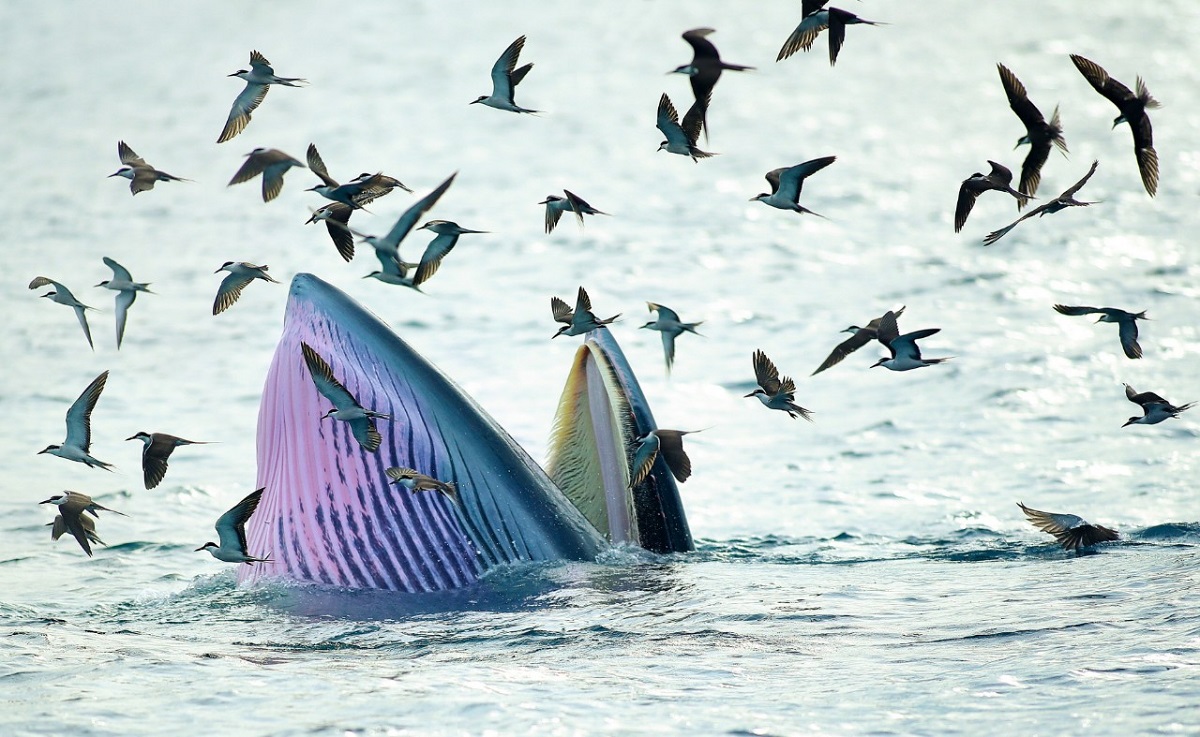
Whales in the Binh Dinh Waters
According to experts from the Nha Trang Oceanographic Institute, Binh Dinh is the only place in Vietnam where whales come close to the shore for several days to feed, indicating that the marine environment is clean, fresh, and rich.
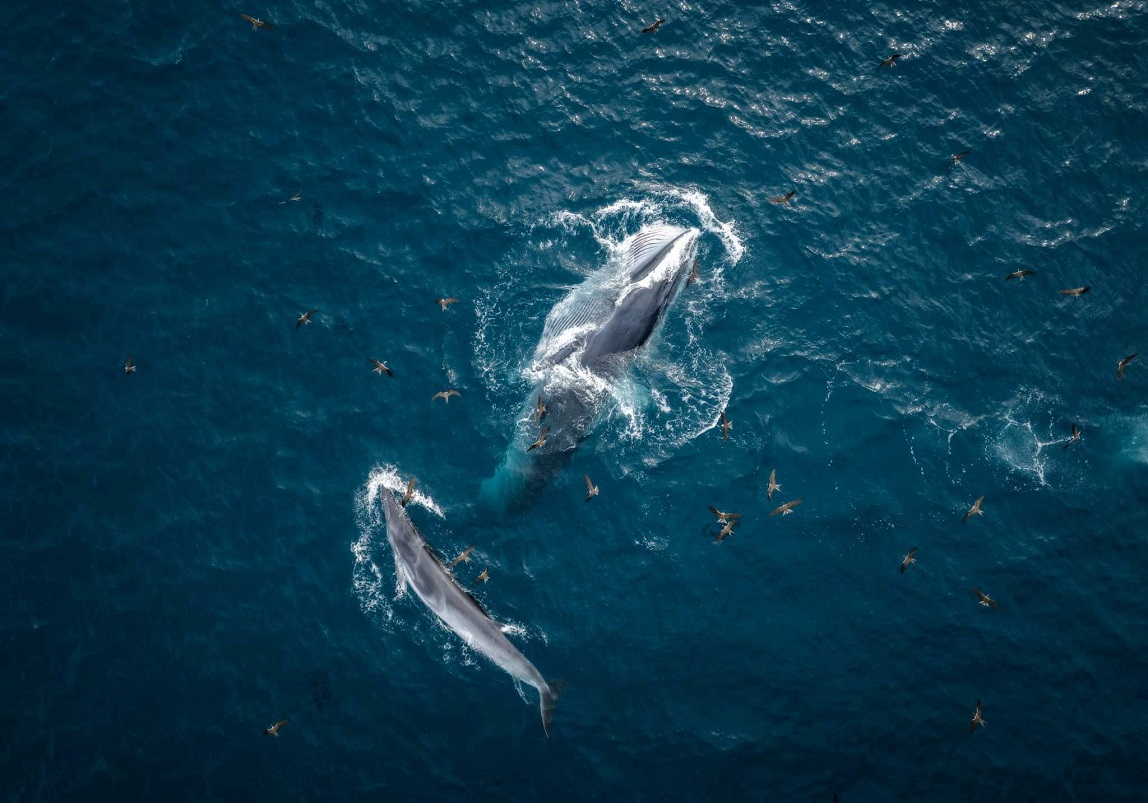 The return of the whales has been the most miraculous thing to happen to the people of this area in years. De Gi is a small fishing port in Phu Cat district, Binh Dinh province, about 40 kilometers east-northeast of Quy Nhon. This location has recently become the focus of special attention in Vietnam, with images of whales "anchored" to hunt creating beautiful images.
The return of the whales has been the most miraculous thing to happen to the people of this area in years. De Gi is a small fishing port in Phu Cat district, Binh Dinh province, about 40 kilometers east-northeast of Quy Nhon. This location has recently become the focus of special attention in Vietnam, with images of whales "anchored" to hunt creating beautiful images.
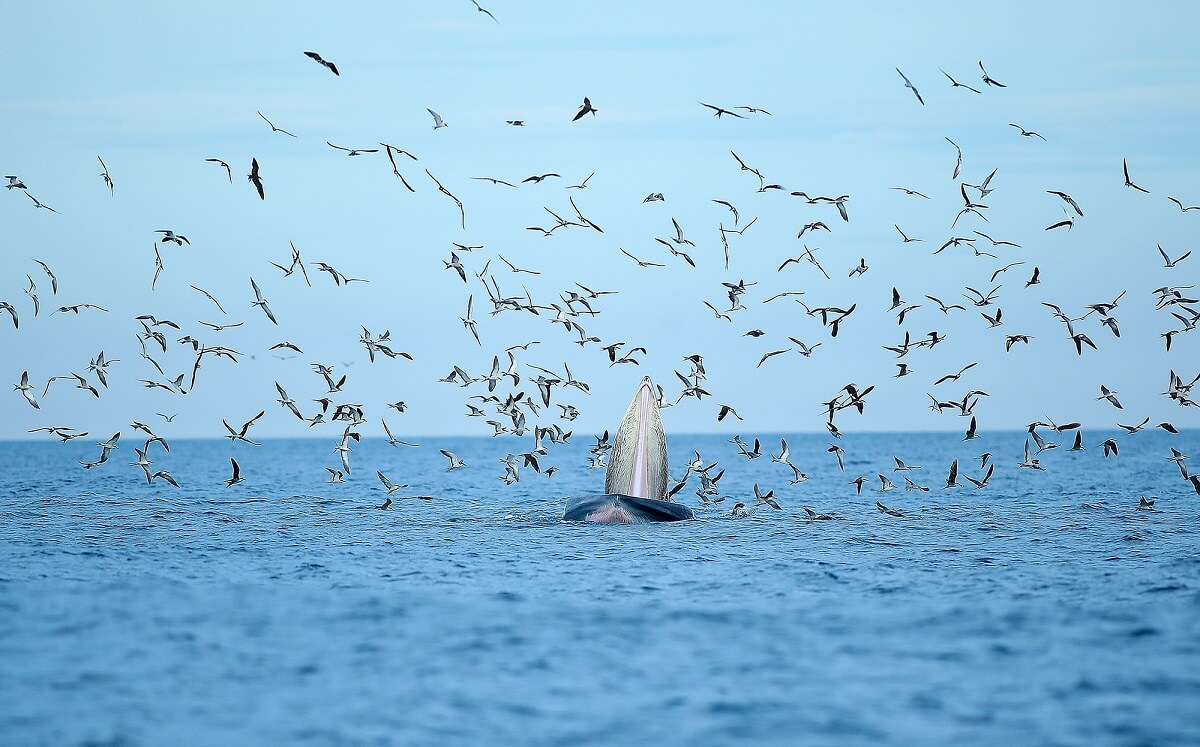 Dr. Vo Van Quang, Head of the Department of Marine Vertebrates at the Nha Trang Oceanographic Institute, stated: "This is the only location in Vietnam where whales feed close to the shore for several days. Because we have only recorded cases of dead stranded whales washed ashore or swam through the waters on migration journeys up to this point. In the face of this fascinating phenomenon, many people have wondered why whales appear in the waters of Binh Dinh and why they stay for so long. The answer is that food sources are densely packed. This marine environment has many whale food sources concentrated due to favorable factors such as ocean currents, warm temperatures, clean marine environment, rich plankton, and so on."
Dr. Vo Van Quang, Head of the Department of Marine Vertebrates at the Nha Trang Oceanographic Institute, stated: "This is the only location in Vietnam where whales feed close to the shore for several days. Because we have only recorded cases of dead stranded whales washed ashore or swam through the waters on migration journeys up to this point. In the face of this fascinating phenomenon, many people have wondered why whales appear in the waters of Binh Dinh and why they stay for so long. The answer is that food sources are densely packed. This marine environment has many whale food sources concentrated due to favorable factors such as ocean currents, warm temperatures, clean marine environment, rich plankton, and so on."
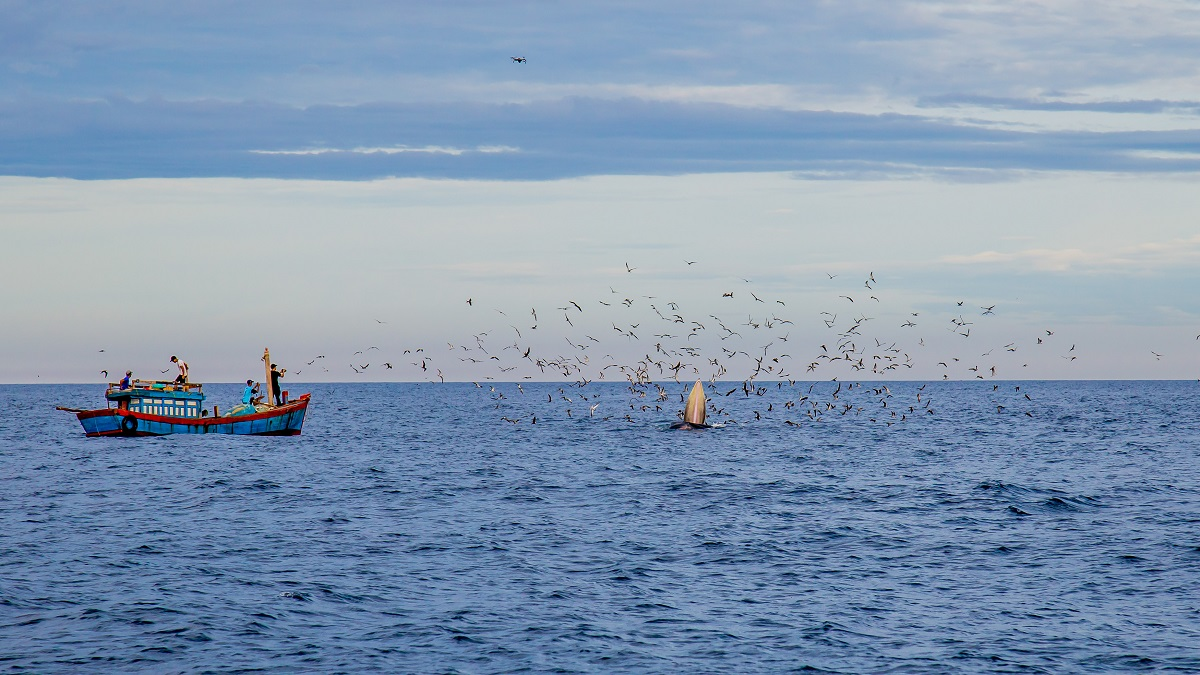 According to local fishermen, the fish has 7-8 large and small fish that have stopped by and stayed for a long time to follow the anchovies and herring. Once upon a time, about a decade ago, whales would visit this sea every year for 1-2 days. Dynamite fishing, on the other hand, depleted the food sources of large fish. Furthermore, noise pollution and toxic explosives in the marine environment have prevented marine mammals (which use sound to communicate and navigate) from stopping. When the use of explosives at sea was prohibited in recent years, the water flow and marine ecological environment were restored to their original equilibrium, and the appearance and long stay of the fish this time is a testament to the community's and management agencies' efforts in preserving marine resources and the environment.
According to local fishermen, the fish has 7-8 large and small fish that have stopped by and stayed for a long time to follow the anchovies and herring. Once upon a time, about a decade ago, whales would visit this sea every year for 1-2 days. Dynamite fishing, on the other hand, depleted the food sources of large fish. Furthermore, noise pollution and toxic explosives in the marine environment have prevented marine mammals (which use sound to communicate and navigate) from stopping. When the use of explosives at sea was prohibited in recent years, the water flow and marine ecological environment were restored to their original equilibrium, and the appearance and long stay of the fish this time is a testament to the community's and management agencies' efforts in preserving marine resources and the environment.
"From a herd of 7-8 whales, the remaining two whale mothers anchored in Binh Dinh for more days to continue hunting and enjoying the fresh sea here," said Mr. Do Thanh Toan, tour leader De Gi - Vung Boi and local fisherman.
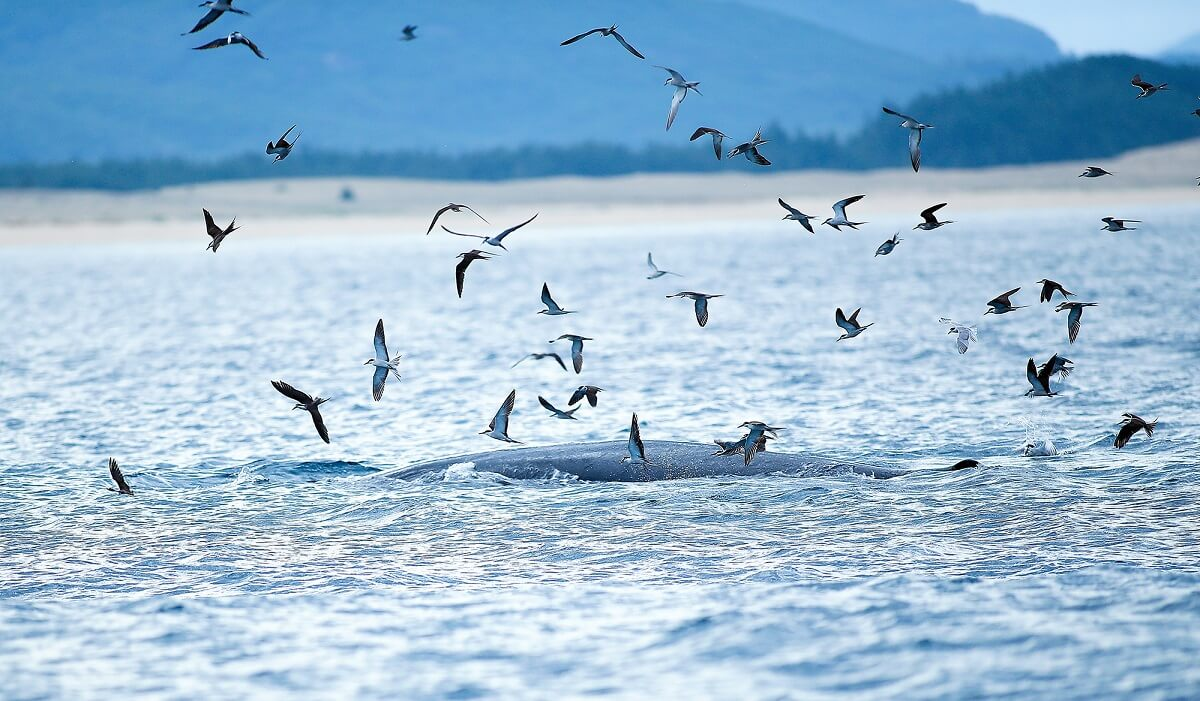 Nha Trang Oceanographic Institute's Dr. Vo Van Quang added: "These whales hunt for small fish as a source of food. Seabirds follow whales to prey because whales stay here for so long and birds fly with so much prey. As a result, it is not only necessary to protect the whale, but also to protect the food source, because if the whale runs out of bait, it will swim away. The sea in Binh Dinh appears to be quite clear. The first and most important factor in developing a diverse and rich marine ecosystem is a clean marine environment."
Nha Trang Oceanographic Institute's Dr. Vo Van Quang added: "These whales hunt for small fish as a source of food. Seabirds follow whales to prey because whales stay here for so long and birds fly with so much prey. As a result, it is not only necessary to protect the whale, but also to protect the food source, because if the whale runs out of bait, it will swim away. The sea in Binh Dinh appears to be quite clear. The first and most important factor in developing a diverse and rich marine ecosystem is a clean marine environment."
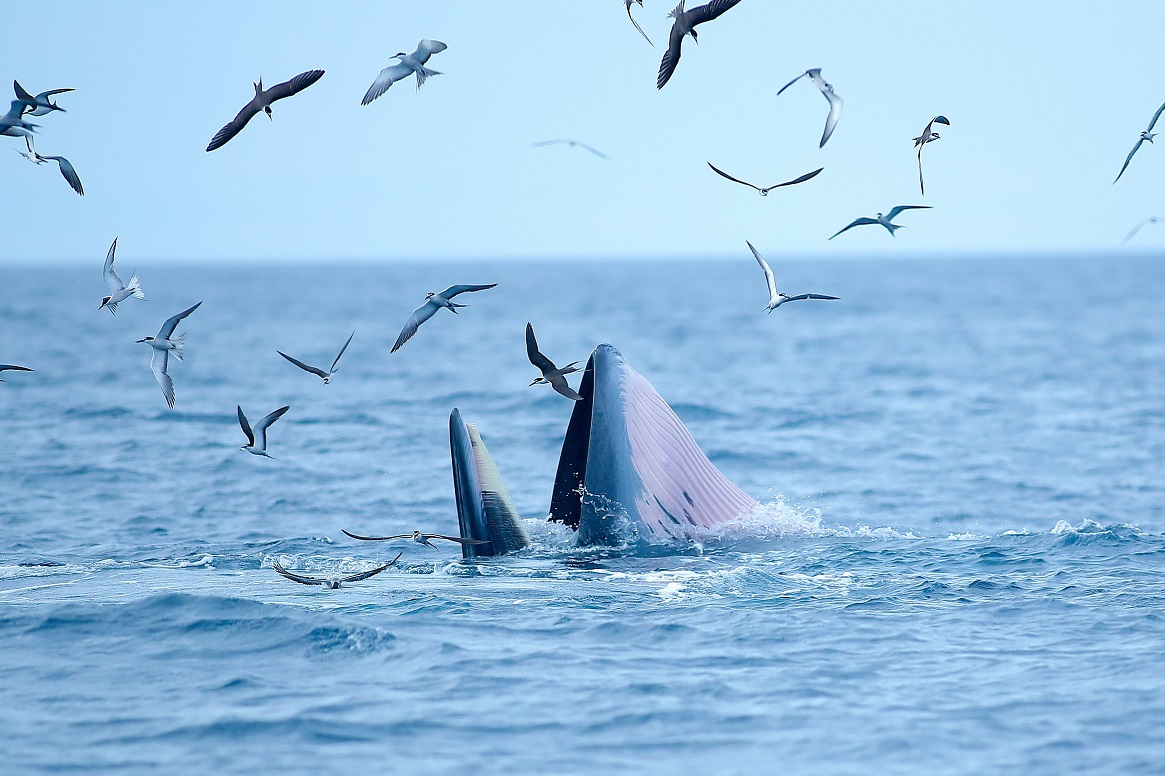 Because of their curiosity and desire to see whales "in the flesh," a large number of people have been pouring into this sea in recent days. For photographers and photographers, this is a once-in-a-lifetime opportunity to capture and capture images of whales hunting. "To say the least, it's very emotional. We are too small in the face of such vast and tolerant nature. The image of giant fish tossing themselves onto the sea's surface, shoving fish into their mouths to spit white water that day has remained in my heart and special memory for the rest of my life. It's fortunate! ", according to Nguyen Phan Dung Nhan, a Binh Dinh reporter.
Because of their curiosity and desire to see whales "in the flesh," a large number of people have been pouring into this sea in recent days. For photographers and photographers, this is a once-in-a-lifetime opportunity to capture and capture images of whales hunting. "To say the least, it's very emotional. We are too small in the face of such vast and tolerant nature. The image of giant fish tossing themselves onto the sea's surface, shoving fish into their mouths to spit white water that day has remained in my heart and special memory for the rest of my life. It's fortunate! ", according to Nguyen Phan Dung Nhan, a Binh Dinh reporter.
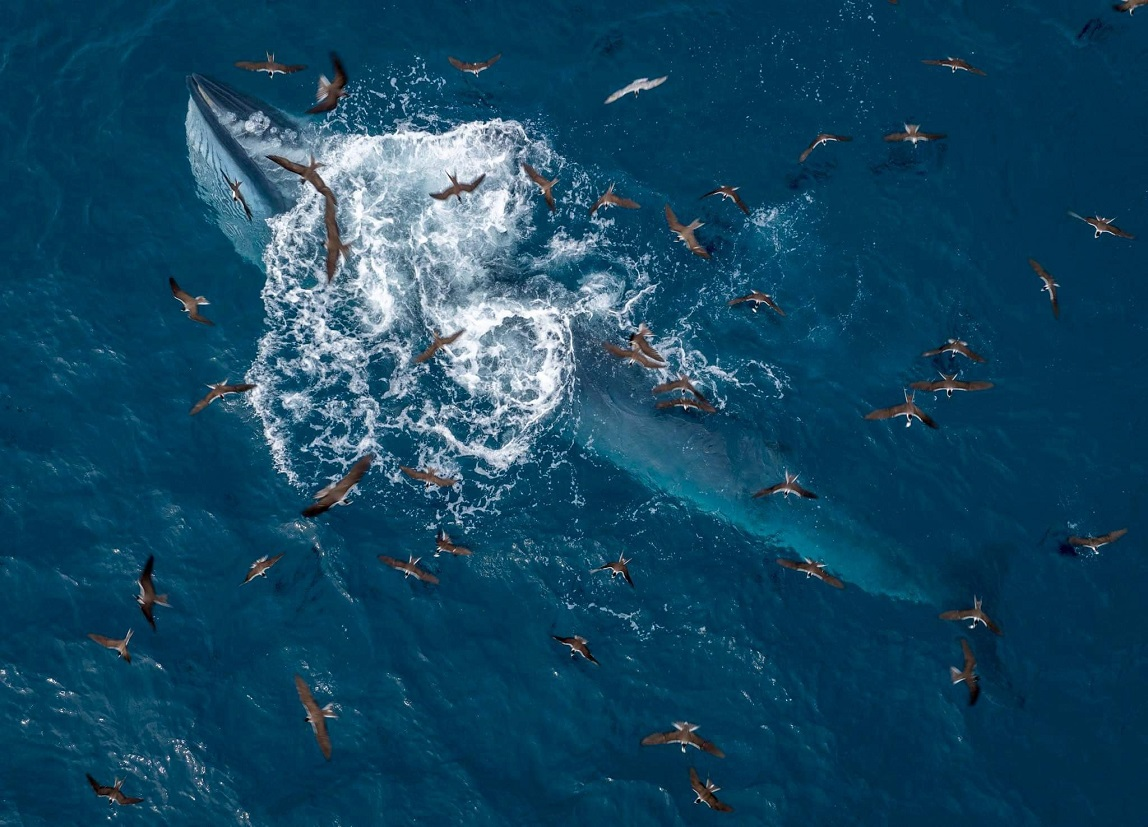 According to Marine Life Vietnam research, the mother whale that has been making headlines in Binh Dinh in recent days is the Bryde whale (Balaenoptera edeni). These whales are rare species that can be found in the Pacific, Indian, and Atlantic Oceans, but they are most commonly found in tropical and subtropical waters with temperatures ranging from 16 to 22°C and located between 400N and 400S latitudes. Nearshore whales are welcome in Vietnam, but if they feel unsafe, they will migrate to other waters to live.
According to Marine Life Vietnam research, the mother whale that has been making headlines in Binh Dinh in recent days is the Bryde whale (Balaenoptera edeni). These whales are rare species that can be found in the Pacific, Indian, and Atlantic Oceans, but they are most commonly found in tropical and subtropical waters with temperatures ranging from 16 to 22°C and located between 400N and 400S latitudes. Nearshore whales are welcome in Vietnam, but if they feel unsafe, they will migrate to other waters to live.
They are small whales of the family Balaenopteridae, with males measuring 12 to 13 meters and females measuring 13 to 14 meters. Both sexes weigh between 13.6 and 15 tons. Their body is dark smoky gray on top and white on the bottom. Their head takes up 25% of their body and has three ridges running from the tip of the muzzle to the front of the breathing hole. The IUCN lists Bryde's whale as a threatened species in need of protection.
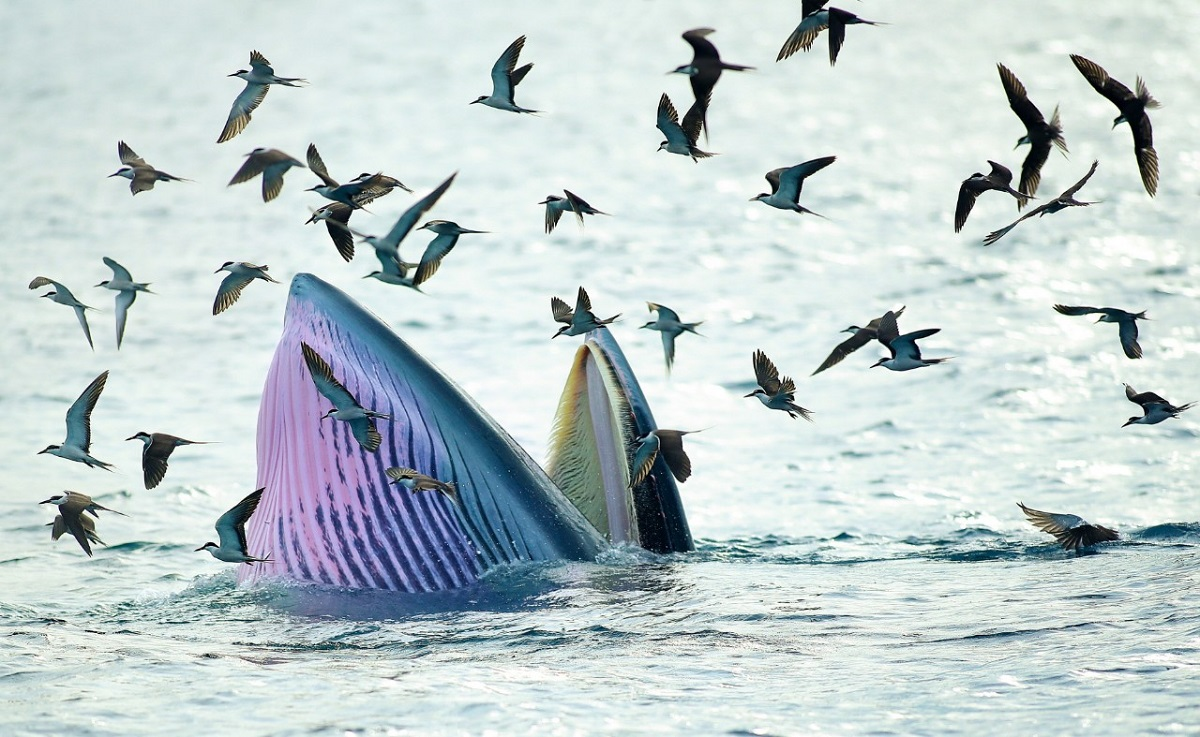 Binh Dinh has seen significant growth in maritime economic activities, marine tourism, and marine services over the years. The conservation of biodiversity and marine ecosystems, the reduction of plastic waste, the sustainable exploitation of marine mineral resources, and the strengthening of the management of marine and island tourism activities are all priorities for the locality, particularly in Quy Nhon City.
Binh Dinh has seen significant growth in maritime economic activities, marine tourism, and marine services over the years. The conservation of biodiversity and marine ecosystems, the reduction of plastic waste, the sustainable exploitation of marine mineral resources, and the strengthening of the management of marine and island tourism activities are all priorities for the locality, particularly in Quy Nhon City.
Images of whales thrashing white water, turtles laying eggs in Nhon Hai sea, colorful coral reefs, or golden apricot sea growing a corner of Hon Dry island will forever be beautiful images of a clean, fresh, and rich sea, thanks to efforts for economic development, green, and sustainable sea tourism.